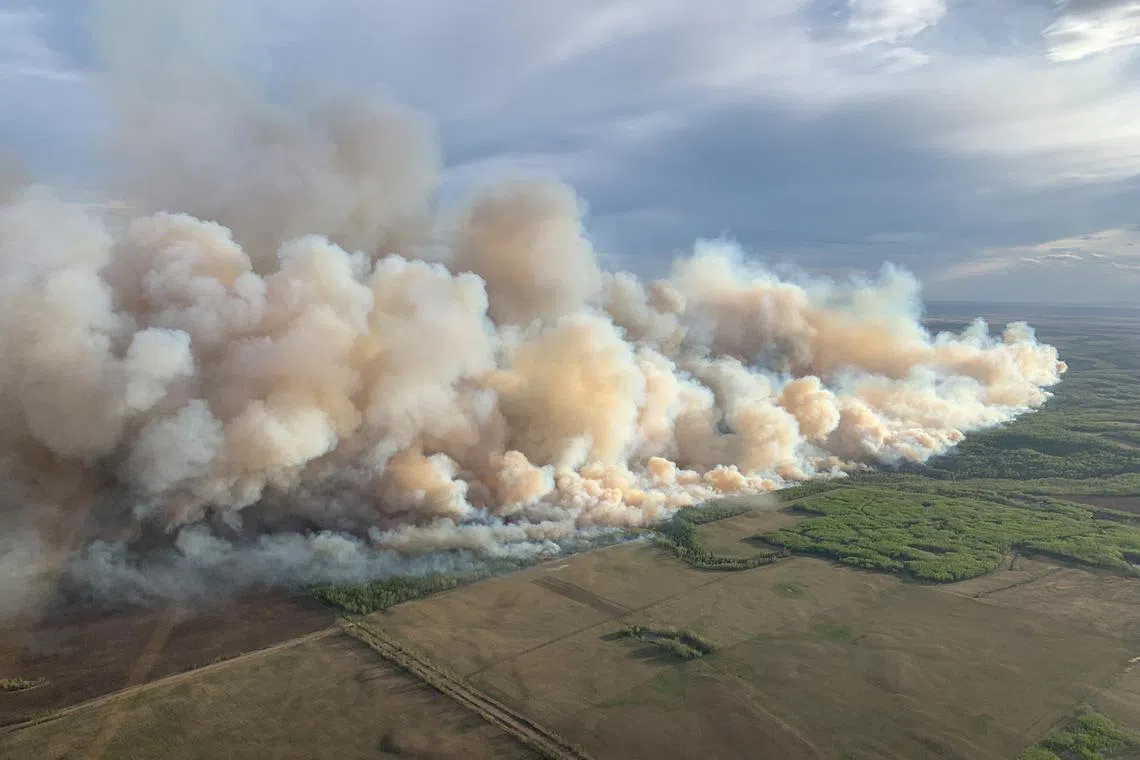Western Canada blazes cause evacuation orders, air quality concerns
Sign up now: Get ST's newsletters delivered to your inbox

Smoke in Fort McMurray on May 11 came from fires in northern British Columbia.
PHOTO: REUTERS
Follow topic:
TORONTO – The season’s first major wildfire continued to spread to roughly 10,000ha across Western Canada on May 12 as the authorities issued an evacuation order for a community in British Columbia and warned of poor air quality across provinces.
In British Columbia, thousands of residents in the Northern Rockies Regional Municipality and Fort Nelson First Nation were evacuated as the nearby blaze spread to 4,136ha.
Fort Nelson First Nation, 7km from the town, also issued an evacuation order for Fontas, an indigenous community.
Northern Rockies Regional Municipality Mayor Rob Fraser in a TV interview said most of the 3,500 residents in and around Fort Nelson had been evacuated.
Across the border in Alberta, residents of Fort McMurray, an oil hub that faced extensive damage from wildfires in 2016, were asked to prepare to leave.
However, by the end of the day, favourable weather helped by a shower forecast tamed fire growth at Fort McMurray. The authorities said they expected fire activity to remain low with more showers expected on May 13.
Alberta continued to stress that two wildfires were extreme and out of control. It recorded 43 active fires, including one located 16km south-west of Fort McMurray.
By May 12, the authorities revised the area affected by fire to 6,579ha, much larger than what was reported on May 10.
Mr Fraser said the fire was started by a tree blown down by strong winds falling onto a power line.
Six crews of wildland firefighters, 13 helicopters and air tankers were taming the fire on May 12, said the Alberta authorities.
Evacuation alerts were in place for Fort McMurray and Saprae Creek Estates, and expanded to Gregoire Lake Estates and Rickards Landing Industrial Park.
Although there is no immediate risk to these communities, the alert ensures residents are prepared to evacuate if conditions change.
Smoke in Fort McMurray on May 11 was coming from fires in northern British Columbia, Alberta said.
Environment Canada issued a special air quality statement that extends from British Columbia to Ontario on May 12.
In 2023, a veil of smoke blanketed the US East Coast, tinging the skies a fluorescent orange, and smoke reached parts of Europe as hundreds of forest fires razed millions of acres, forcing about 120,000 people to flee their homes.
The federal government has warned that Canada faces another “catastrophic” wildfire season as it forecast higher-than-normal spring and summer temperatures across much of the country, boosted by El Nino weather conditions.
Canada experienced one of its warmest winters with low to non-existent snow in many areas, raising fears of a hot summer triggering blazes in forests and wildlands amid an ongoing drought. REUTERS

